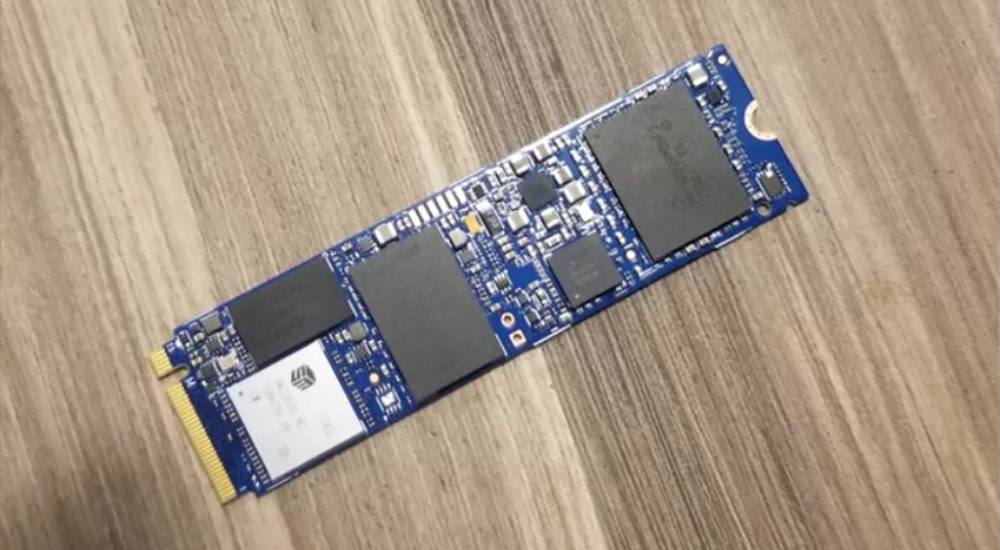HIGHLIGHTS
- No performance specifications or prices have been announced yet
- The Optane Memory H10 SSD is designed for thin-and-light laptops
- Both components share PCie x4 bandwidth equally
Intel has announced its new hybrid Optane Memory H10 SSD, which offers both Intel Optane Memory as well as QLC Flash storage on a single M.2 module. The unit is designed specifically for laptops with only a single M.2 slot, which have not been able to take advantage of a discrete Intel Optane Memory module before now. According to Intel, this has been developed in response to demand from laptop manufacturers. Just like any other combination of an Optane Memory module and storage device, the user of a PC will see only a single virtual storage volume, which is managed by the Intel Rapid Storage Technology driver.
While the QLC flash will serve as the primary storage space, the smaller Optane Memory chip will allow for accelerated reads and writes. Intel’s software prioritises operating system files and learns what else a user accesses frequently, and caches as much as possible on the Optane Memory media. You can read all about what makes QLC Flash interesting in our review of the Samsung SSD 860 QVO.
The Optane Memory H10 SSD is not yet ready to ship, and Intel has not disclosed any performance figures. The company is calling this a technology announcement on the sidelines of CES 2019, not a product announcement. It is expected to launch in laptops from multiple major brands by the second quarter of this year, and plans for retail availability are not yet decided.
Three different capacity options will be available: 16GB + 256GB, 32GB + 512GB, and 32GB + 1TB, with the smaller figures referring to Optane Memory and the larger ones referring to QLC Flash. Intel says the QLC being used is the same as what’s in the previously announced Intel SSD 660p. This should not be confused with Intel’s Optane SSD drives, which use Intel’s super-fast Optane media for storage.
Although the two physical components and their respective controllers and circuitry live on the same M.2 module, they do not interact directly. Each one has access to two PCIe lanes, which could have some impact on general performance. It remains to be seen how the Optane Memory H10 SSD stacks up against a standard SSD in terms of cost and performance.
Laptop manufacturers will be able to claim improved responsiveness as well as quicker boots and resumes from standby, now with their thin and light models. The use of QLC flash in particular is likely to reduce overall cost while allowing for up to 1TB of capacity on a standard single-sided M.2 2280 module.
Intel also made a number of big announcements at its CES 2019 press conference, including the upcoming ‘Ice Lake’ 10nm CPU series, a new ‘Lakefield’ hybrid CPU with heterogenous cores, and the Project Athena programme for a new generation of connected laptops.
Source: gadgets.ndtv.com




































